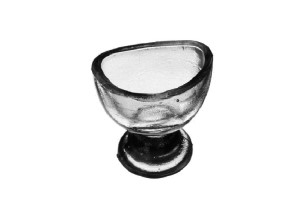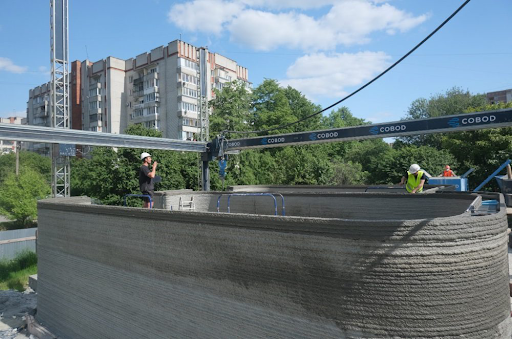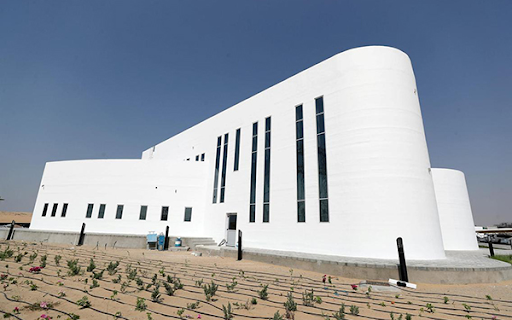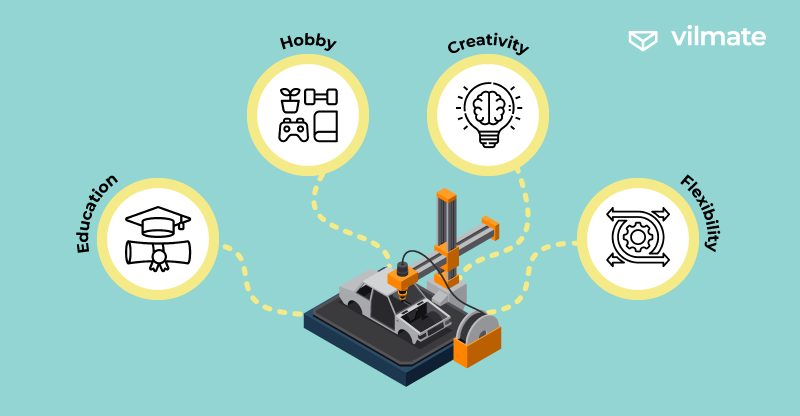What do you know about 3D printers? This technology was promised to be revolutionary, but today people remember it less and less. However, 3D printers haven’t disappeared; they continue to develop.
Modern 3D printers can handle various materials, including plastics, metals, resins, ceramics, and even food. Each material has unique characteristics and applications, and developers continuously work to expand the range of available materials.
Today, we will discuss these devices and their applications. And why you should consult IT specialists if you decide to incorporate 3D printing into your industry.
Let’s start from the very beginning.
A brief history of 3D printers
3D printing isn’t the newest technology in our rapidly developing world. The concept of 3D printing emerged 40 years ago. Dr. Hideo Kodama (please, don’t confuse him with Hideo Kojima) applied for a new patent. As a doctor at a research institute in Nagoya, he devised a device to create objects from photopolymer resin using UV light.
Hideo Kodama couldn’t register a patent, but many associate his name with the invention of 3D printing.
So, what object was printed on the first-world 3D printer? An eye wash cup, of course. Chuck Hull printed it. He worked for a company that made countertop coatings using UV lamps. Chuck figured out how to speed up the production of small plastic parts for prototyping designs. Management gave him space to experiment.

Chuck Hull filed a patent in 1984, and in 1986 the application was approved. As a result, Chuck established his company, 3D Systems.
In 1988, Scott Crump, driven by the desire to create a toy for his daughter, introduced FDM (Fused Deposition Modeling) technology, which provided a more cost-effective approach to 3D printing. Today, when we think of 3D printers, FDM is often the concept that comes to mind. It involves the layer-by-layer deposition of a plastic filament. In 1992, Scott and his wife, Lisa Crump, launched the first mass-produced FDM printer, the Stratasys 3D Modeler.
Now, 3D printers are devices capable of creating three-dimensional objects by applying layers of material based on a digital model. They represent a form of additive manufacturing, where an object is created by gradually adding material layer by layer.
As technology continues to gain popularity, people are continually conceptualizing new ideas for 3D printing and applying them across various industries. The goal is to make production more affordable and accessible. However, despite these advancements, 3D printers are not encountered everywhere. Let’s figure out why.
The popularity of 3D printers
Today, many wonder why 3D printers fail as a technology. In reality, they haven’t. The 3D printing market was valued at $13.8 billion in 2021. Furthermore, researchers assert that the popularity of these devices will continue to grow by 18-27% each year.
The erroneous impression of the ‘disappearance’ of 3D printers from people’s lives appeared for several reasons:
- high expectations;
- slow development of technology;
- 3D printers aren’t common for every household.
3D printers have reached a stage of development similar to that of personal computers in the 1970s. Computers were primarily utilized in production during that time, with widespread distribution still a distant prospect.

The revolution didn’t happen for several reasons:
- 3D printing is developing slowly. Devices have limitations when reproducing specific shapes, such as perfect spheres or sharp corners. Additionally, the choice of materials for 3D printing is still significantly restricted. Parts created through 3D printing may not be flawless and can contain errors. Engineers are continuously working to address these shortcomings, albeit gradually. The technology wasn’t prepared for the level of attention it received worldwide.
- 3D printers aren’t cheap devices. Buyers still struggle to comprehend the practical utility of owning a 3D printer at home, especially considering its relatively high price. Furthermore, individuals must purchase materials for printing purposes, adding to the overall cost.
- 3D modeling software is too complex. Purchasing a 3D printer doesn’t guarantee immediate usability. One needs a digital model to print objects using such a device successfully. Creating these models can be challenging, and comprehensive libraries for downloading ready-made designs are still lacking. Furthermore, maintaining a 3D printer can be complex, requiring technical knowledge and troubleshooting skills. Not every user will invest time and effort to acquire these skills.
- The manufacturers aren’t interested in competition. The concerns of large corporations indeed impede the progress of 3D printing. Understandably, manufacturers would lose significant profits if consumers could print the required parts at home. This economic factor poses a challenge to the widespread adoption and development of 3D printing technology.
Indeed, a common misconception is that a 3D printer is a magical device that can instantly produce fully assembled objects. In reality, 3D printers construct shapes layer by layer, and creating complex items requires additional effort and manual work.
There is an existential question: can a 3D printer print another 3D printer? The answer is yes. However, each subsequent iteration would likely be lower quality than its predecessor. It happens due to the limitations and precision variations inherent in the printing process and the need for additional components, such as motors and electronics, which might not be readily printable.
The RepRap concept has been one of the most successful endeavors for 3D printers capable of self-replication. It holds the potential to enable the technology to reach ordinary households. While it’s true that we are still on the cusp of a revolution that has not fully materialized, it’s unlikely that 3D printers will fade into oblivion. If we examine the various fields where 3D printing finds applications, it becomes evident that further development and advancement lie ahead for the technology.
TOP 3 spheres for 3D printers
If you haven’t been interested in 3D printing before, you may not know about the scope of its applications. Let’s explore the top 3 industries where 3D printers are already being successfully used and where these devices have great potential.
1. Medicine
Medicine is arguably the most fascinating field for 3D printing. One of the key advantages of 3D printers is their ability to work with various materials. Let’s explore a few noteworthy examples of 3D printing applications in the medical industry:
- Prostheses creation. It’s a highly personalized process tailored to each patient’s data. As a result, establishing mass production isn’t feasible, and prostheses tend to be quite expensive. However, 3D-printed prostheses offer a more cost-effective and time-efficient solution. Prostheses can be designed and manufactured at a significantly lower cost and within a shorter time frame. It takes several months to produce a prosthesis using a 3D printer. This approach is particularly beneficial for developing countries.
- Orthopedic implant production. 3D printing is highly suitable for creating porous surfaces, enabling implants to integrate seamlessly with a patient’s bones. Notable cases have already been documented where individuals received 3D-printed titanium implants for various body parts, including the pelvis, jaw, and facial structures.
- Organ creation. This practice is still in the research stage. However, it’s already known that 3D printers can utilize biological materials for printing purposes. The technology has the potential to revolutionize transplant surgery. In the earlier stages of technology development, these printed organs could be used for ethical pharmaceutical testing, providing a more accurate and human-relevant model for drug development.
- Pills manufacturing. Due to the printer’s capabilities in creating porous surfaces, pharmacists can manufacture porous pills. The unique texture enables patients to take higher doses of medication in a single pill. Moreover, porous drugs offer faster and easier digestion, improving medication delivery.
The prospects for 3D printing in medicine are impressive. Now the technology must thrive.
2. Construction
In the realm of construction, numerous companies are already harnessing the potential of 3D printers. The construction field employs various techniques, such as extrusion, powder bonding, and additive welding. These technologies enable the creation of precise models and accurate components for future buildings.
The versatility of 3D printers allows for the construction of entire houses or individual building components. As an illustration, a notable example is using a 3D printer in constructing a school in Lviv, Ukraine.
Below you can see the construction process.

Dubai proudly holds the distinction of hosting the world’s largest building constructed using 3D printing technology. The office building, which opened in 2019, showcases the remarkable capabilities of 3D printing in the construction industry. Notably, the builders relied exclusively on locally sourced components, emphasizing the potential for utilizing local resources in 3D-printed construction projects.

The year 2016 marked a significant milestone in construction as Madrid, Spain, witnessed the creation of its first 3D-printed pedestrian bridge. This remarkable bridge spans a length of 12 meters and stands as a testament to the advancements in additive manufacturing technology. The bridge’s stability is ensured by utilizing computational design, which enables precise material distribution throughout the structure, optimizing its strength.
Advantages of 3D printers in construction:
- Fast and cost-effective construction. 3D printers offer a speedy and economical approach to constructing buildings. Compared to traditional methods, they can create building elements and structures in significantly less time, reducing construction duration and labor costs.
- High precision and quality. 3D printers provide exceptional precision and repeatability when manufacturing building parts. This advanced level of accuracy minimizes the risk of errors and inconsistencies, resulting in improved overall quality and structural integrity.
- Design and architectural freedom. With 3D printers, architects and designers can bring complex geometries and innovative design concepts to life. This technology enables the realization of intricate shapes and structures that may be challenging or impossible to achieve using conventional construction techniques, allowing for greater creative freedom.
- Eco-efficiency. Integrating 3D printers in construction promotes eco-efficiency by minimizing waste and optimizing material usage. Through design optimization and precise material management, 3D printing helps reduce the environmental impact of construction activities, contributing to a more sustainable approach.
Disadvantages of 3D printers in construction:
- Material considerations. Certain construction materials pose challenges when used with 3D printers. For instance, specialized printers and materials are needed for high-strength concrete, leading to additional costs and complexities in the construction process.
- High equipment investment. The initial acquisition and ongoing maintenance costs of 3D printers for construction can be substantial. This expense may limit the widespread adoption of this technology, particularly for smaller construction businesses.
- Skilled workforce requirement. Operating and working with 3D printers necessitate expertise and proficiency on the part of operators and engineers. The shortage of qualified specialists can hinder cost-effectiveness and the widespread implementation of 3D printing in construction.
- Reliability and safety assurance. Ensuring the reliability and safety of structures created using 3D printers is crucial. Rigorous testing and analysis are essential to meet compliance standards for safety and durability, maintaining confidence in the structural integrity of printed constructions.
In the realm of futuristic possibilities, a concept envisions using 3D printing to construct environments suitable for extraterrestrial life. For instance, buildings could be created using local materials and a minimal workforce on celestial bodies like the Moon or Mars.
The advantage of 3D printing is its potential to provide affordable housing for everyone. By leveraging this technology, the construction industry can revolutionize the accessibility and affordability of housing, making it more attainable for a broader population. Therefore, recognizing the construction industry as a promising domain for 3D printers is crucial.
Manufacturing
Manufacturing is the most apparent use for 3D printers, and here’s why:
- Rapid prototyping. With 3D printers, you can quickly prototype products and components. This way, you can quickly test ideas, and make changes and improvements, reducing development time and physical prototyping costs.
- Reducing time and costs. 3D printers can significantly speed up the manufacturing process. They allow you to reduce the number of steps required, simplify assembly and reduce the cost of logistics and storage of spare parts.
- Customization and personalization. With the help of 3D printers, you can easily customize products to customers’ individual needs and preferences.
While 3D printing technology is still not ideal for large-scale production due to its relatively slow printing speed, it presents a compelling proposition for businesses focusing on individual orders rather than mass production. Incorporating a 3D printer can be an excellent strategy for business development, enabling customization and personalized manufacturing.

However, the question remains whether a 3D printer is necessary in every household. Let’s consider potential use cases to assess their relevance.
How to use a 3D printer at home
Why might you want to have a 3D printer at home?
- Designing customized items. 3D printers can create and produce individualized items and products according to specific orders. The possibilities are vast, whether it’s unique home furnishings, personalized gadget stands, decorations, or other creative pieces.
- Replacement of spare parts. When finding or ordering a difficult-to-source spare part for a home appliance, a 3D printer can come to the rescue. By printing the desired part yourself, you can save time and money, avoiding the need for lengthy searches or expensive replacements.
- Modeling and prototyping. 3D printers are valuable tools for creating models and prototypes to bring ideas to life. Whether you have a project or a product concept in mind, this technology enables you to visualize and test your designs before embarking on full-scale production.
- Creative projects and hobbies. Unleash your imagination and creativity with 3D printing. From crafting sculptures and models to producing toys and cosplay items, this technology opens up possibilities for creative expression and engaging hobbies.
- Educational pursuits. 3D printers are invaluable educational resources, allowing students to delve into design, engineering, and manufacturing. They facilitate hands-on exploration of 3D modeling, technical creativity, and problem-solving, fostering a deeper understanding of these subjects.
In the near future, 3D printers will likely gain popularity among home users. However, the devices must become more affordable and user-friendly for this to happen.

How can IT professionals help with 3D printing?
Vilmate can offer its services in 3D printing integration for your purposes:
- Software development. Our team of IT specialists will handle the development of the required software for operating 3D printers. This service encompasses software for modeling and creating 3D models and software for managing the printing process and controlling the equipment.
- Data processing. 3D printers process large volumes of data for creating and printing 3D models. Our experts at Vilmate can configure data processing, including data transfer to the printer, memory management, and data storage.
- Integration with other systems. Our skilled professionals can seamlessly integrate 3D printers with other devices and techniques, such as automated production lines or Product Lifecycle Management (PLM) systems, ensuring smooth collaboration and compatibility.
- Cloud computing configuration. With the widespread adoption of cloud computing technologies, companies now offer cloud-based additive manufacturing services, enabling consumers to remotely create parts and objects without purchasing a 3D printer. Our specialists are proficient in creating cloud services and are always happy to assist you.
For any other ideas or requirements, feel free to contact Vilmate, and our team is ready to collaborate with you in exploring their implementation.




